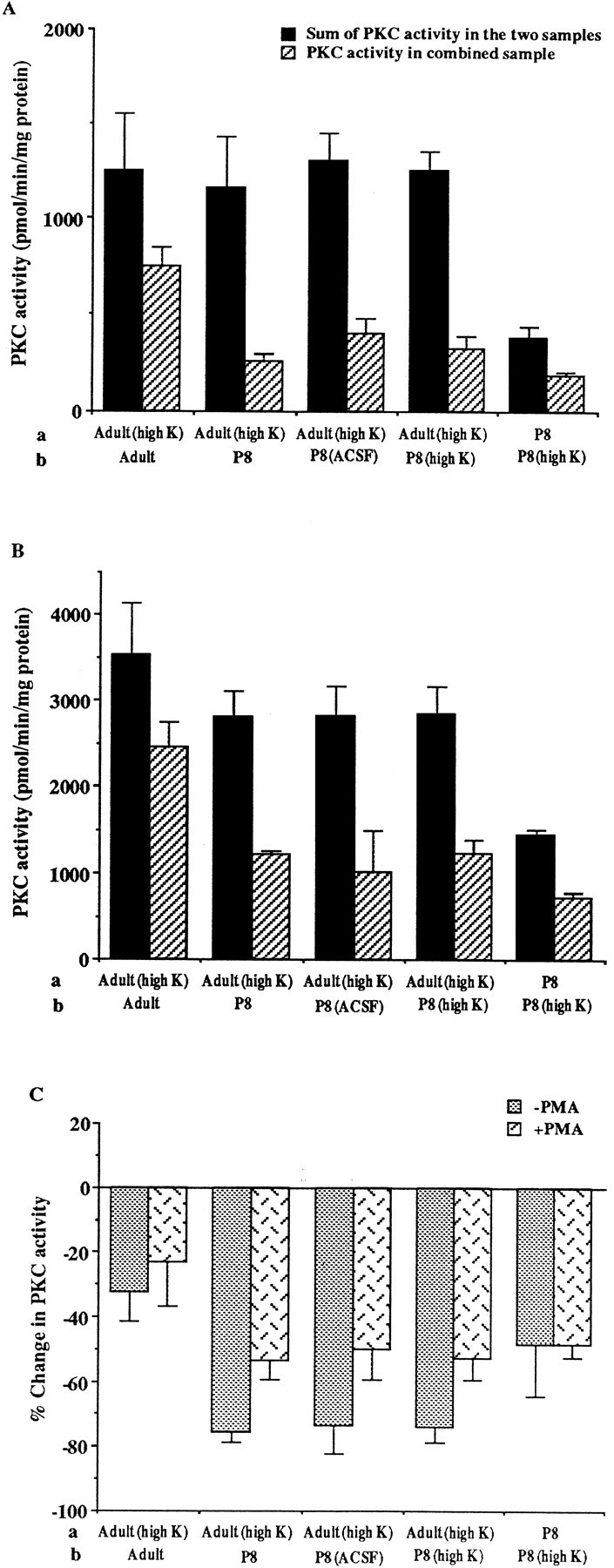Fig. 7.

The inhibitory effects of P8 homogenates on PKC activity. PKC activity of P8 and adult cerebellar homogenates, and of homogenates of P8 and adult cerebellar slices that were preincubated in ACSF or high-K ACSF, was determined individually. The homogenates of two samples (a, b), indicated on thex-axis, were then mixed, and the PKC activity of the combined sample (a, b) was measured. The PKC activity in the combined sample and the sum of the PKC activity of the two samples is shown in A (without PMA) andB (with 10 μm PMA). The sum of the PKC activity in the adult (high K) sample and in P8, P8 (ACSF), P8 (high K) samples is significantly different from that in the combined samples, adult (high K) plus P8, adult (high K) plus P8 (ACSF), and adult (high K) plus P8 (high K), with p < 0.05, 0.01, and 0.002 (without PMA), respectively, and p < 0.01, 0.05, and 0.02 (with PMA), respectively (n = 3), by a two-tailed Student’s t test. The PKC activity in the combined sample, P8 plus P8 (high K), is also different from the sum of PKC activity in the P8 and in P8 (high K) samples;p < 0.05 (without PMA) and p< 0.01 (with PMA) (n = 3), by a two-tailed Student’s t test. Changes in PKC activity resulting from the mixing of the two samples (C) were calculated, using the equation [(a +b/(a + b)) − 1] × 100%.
